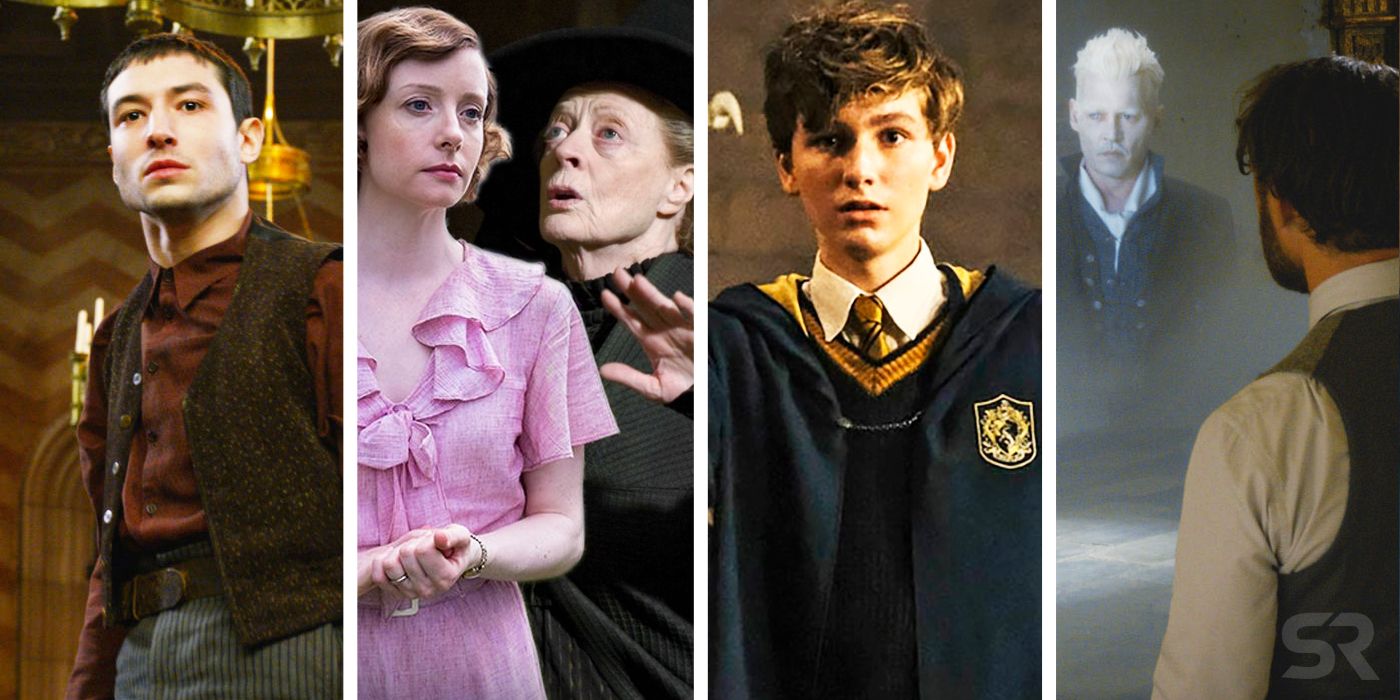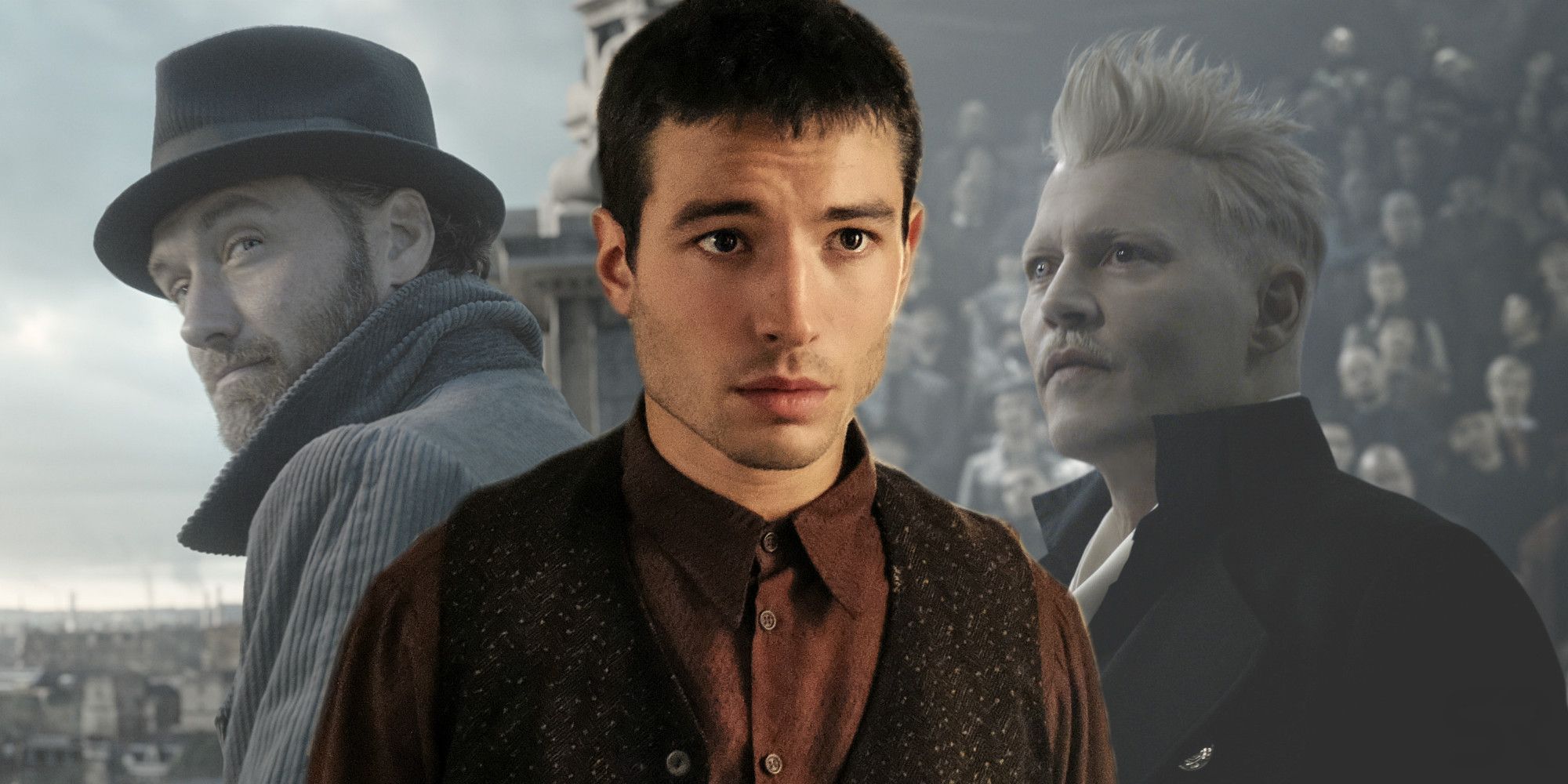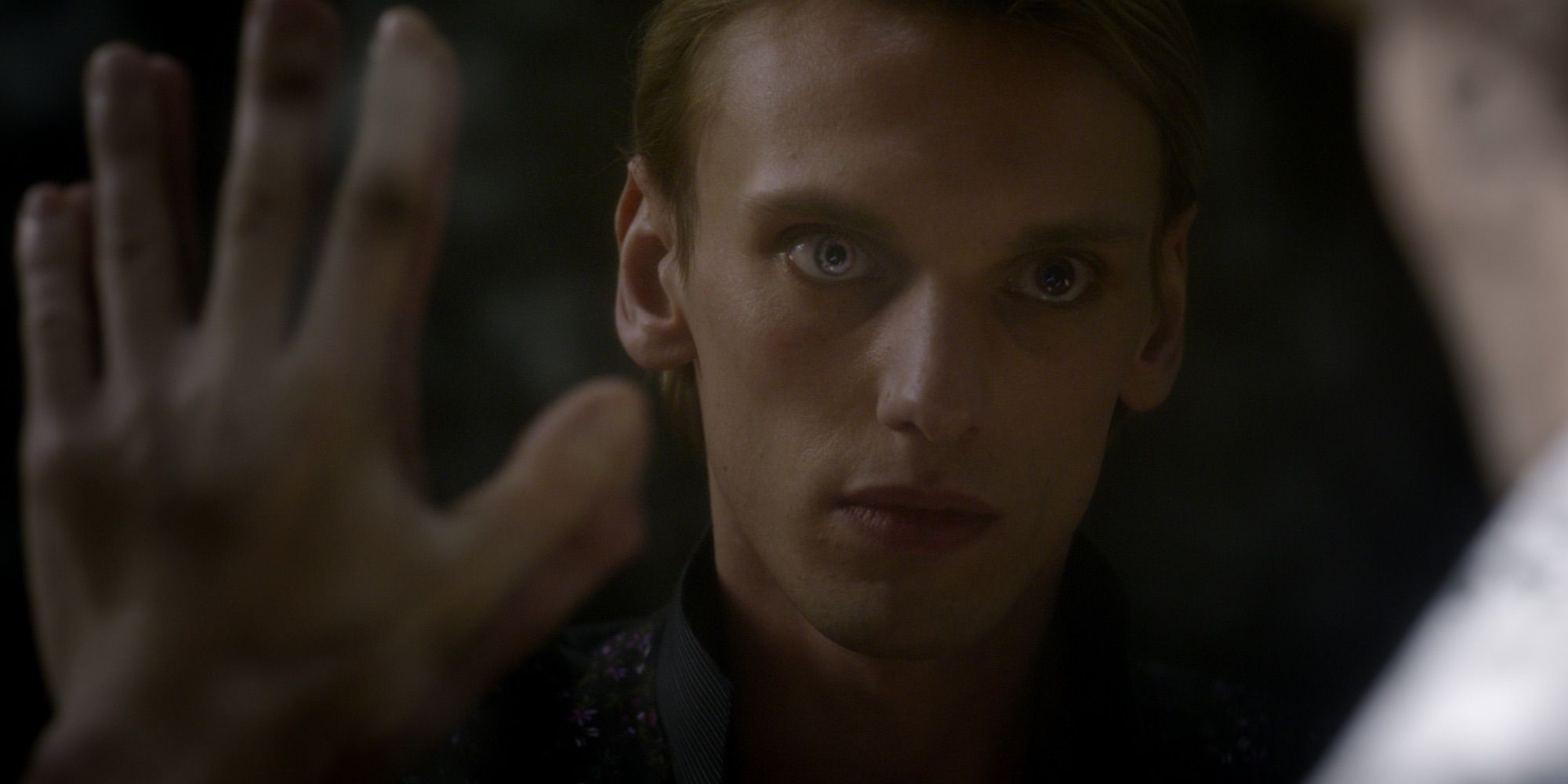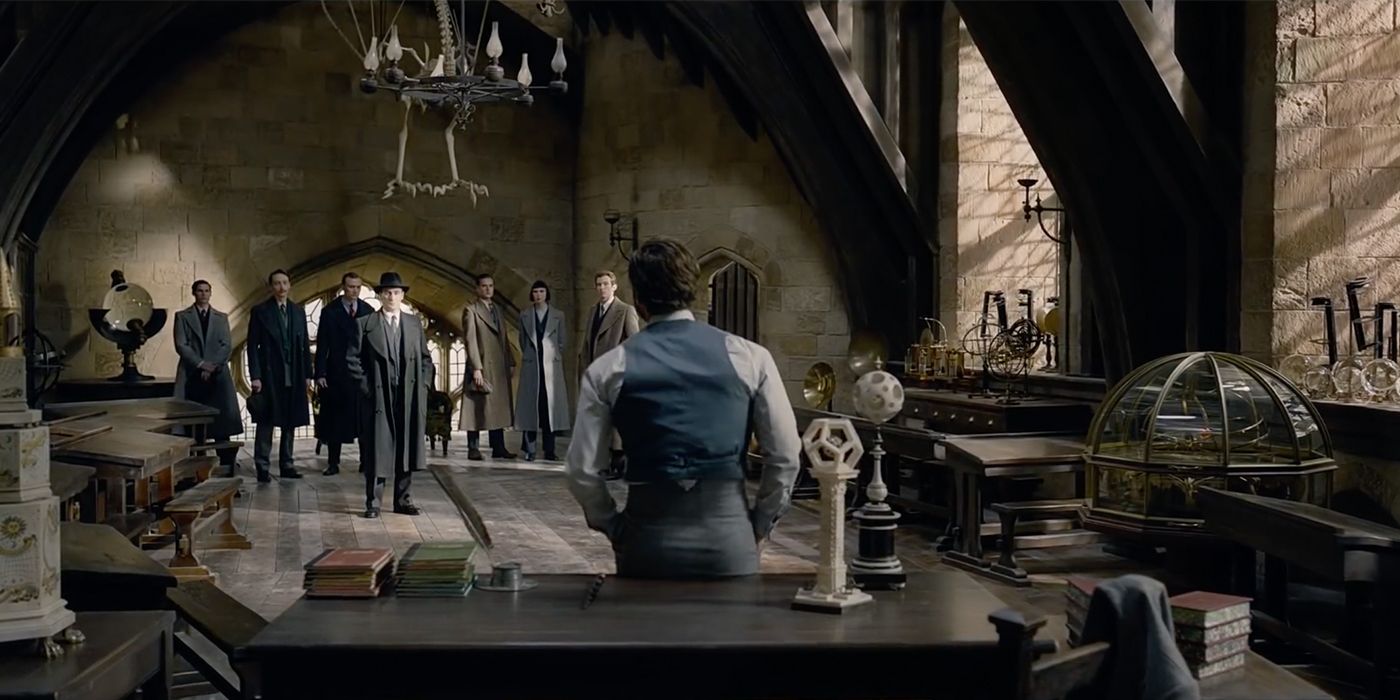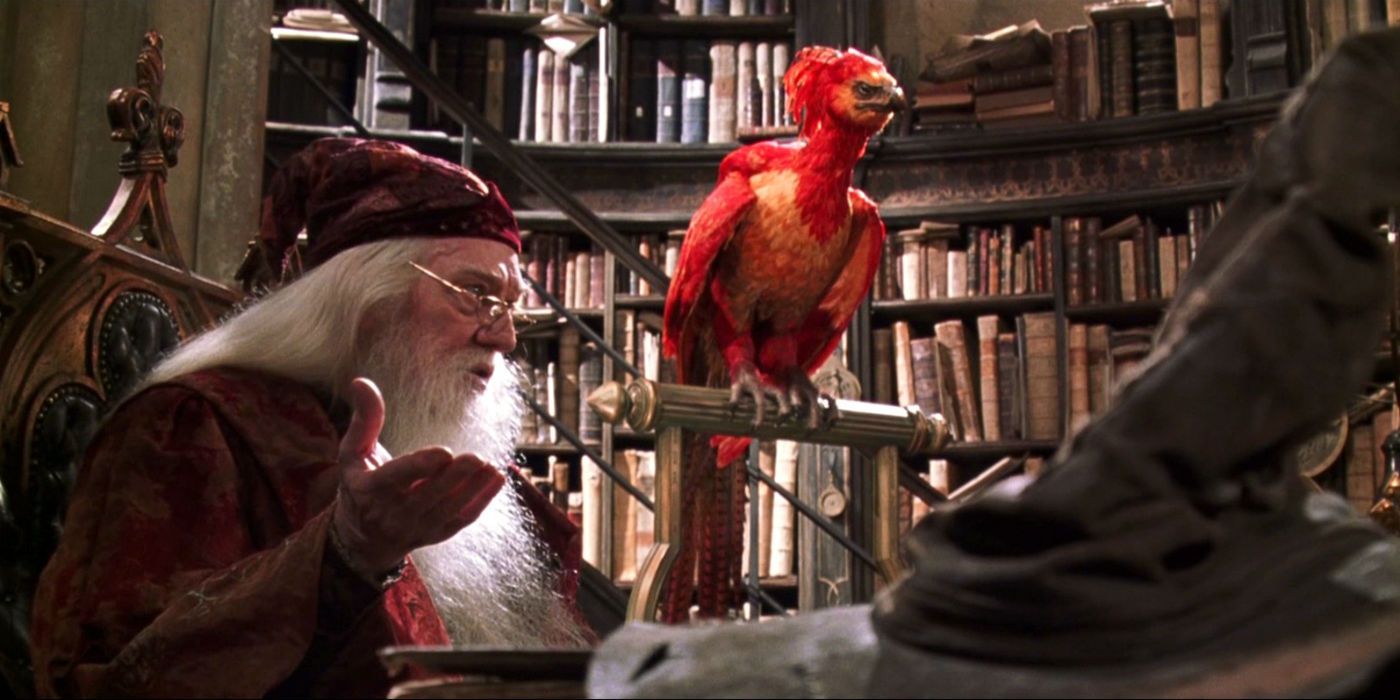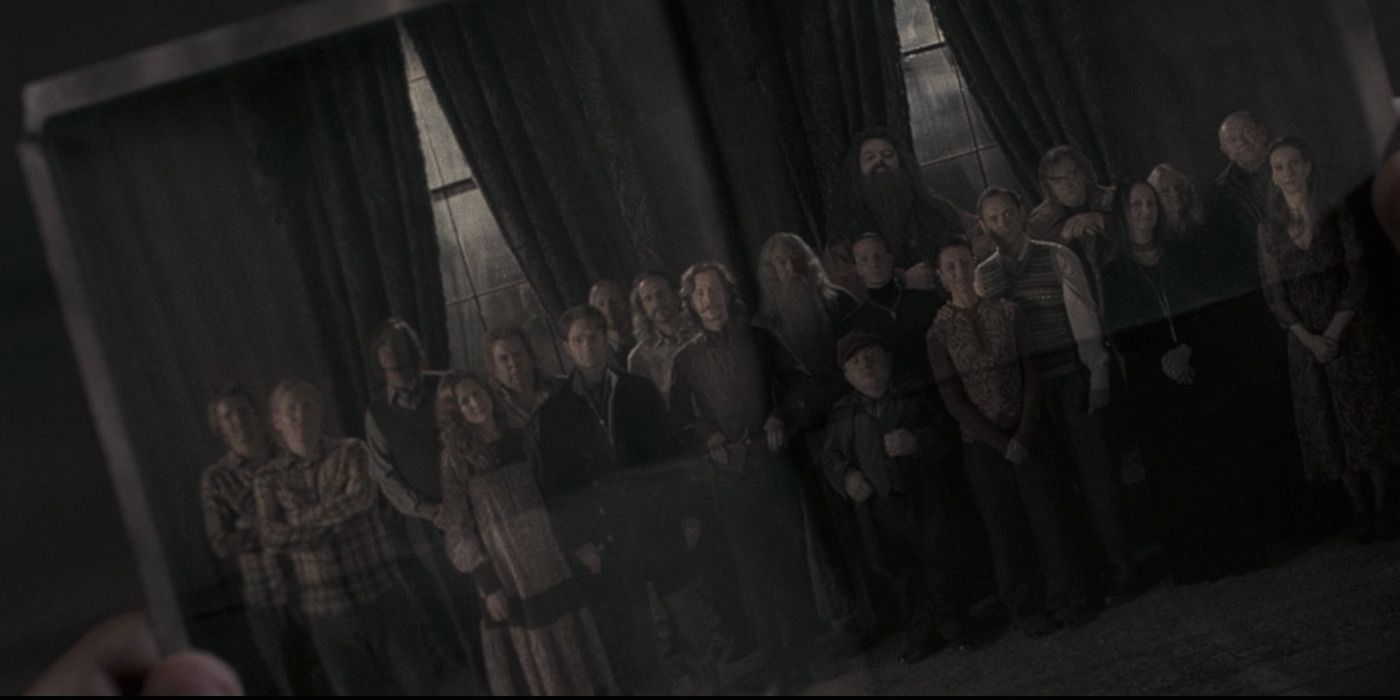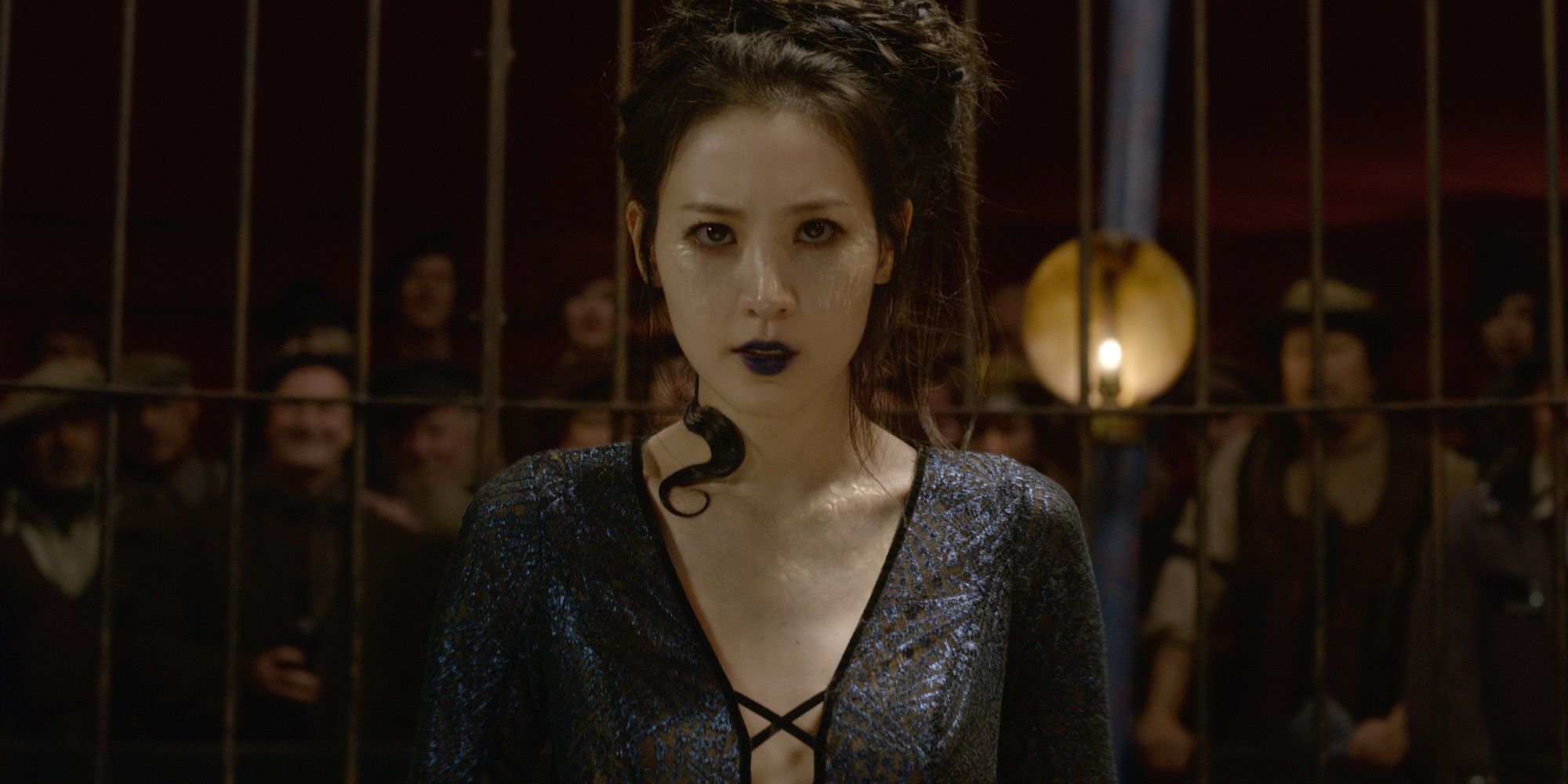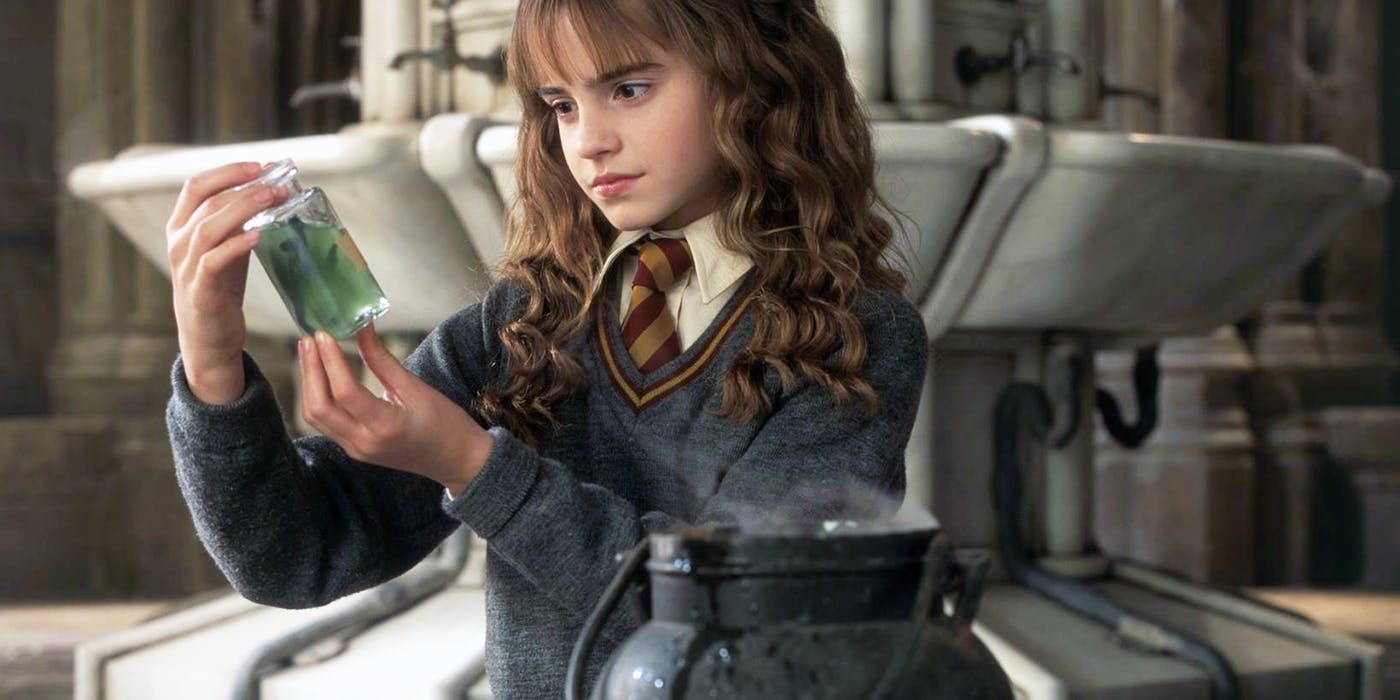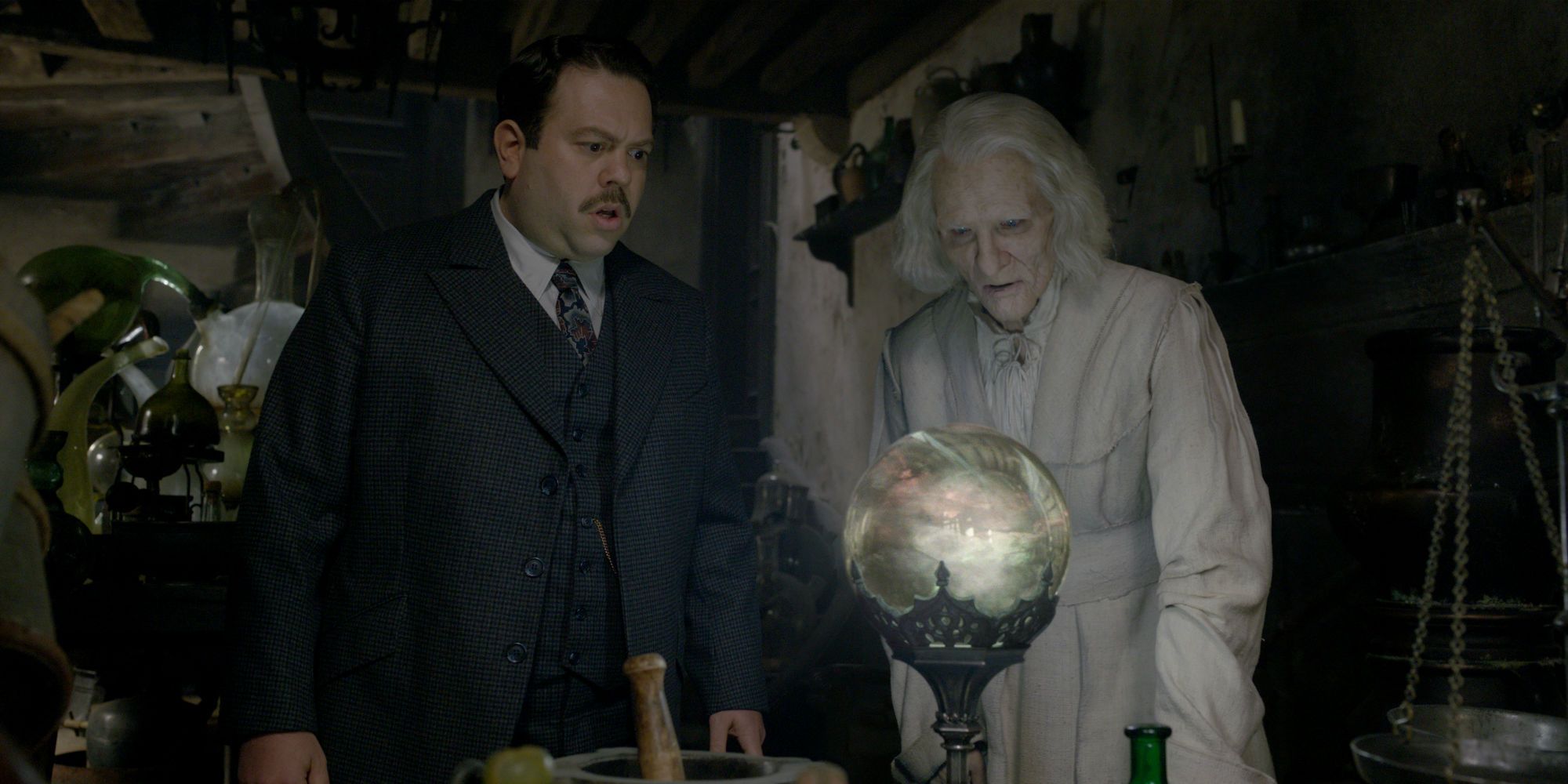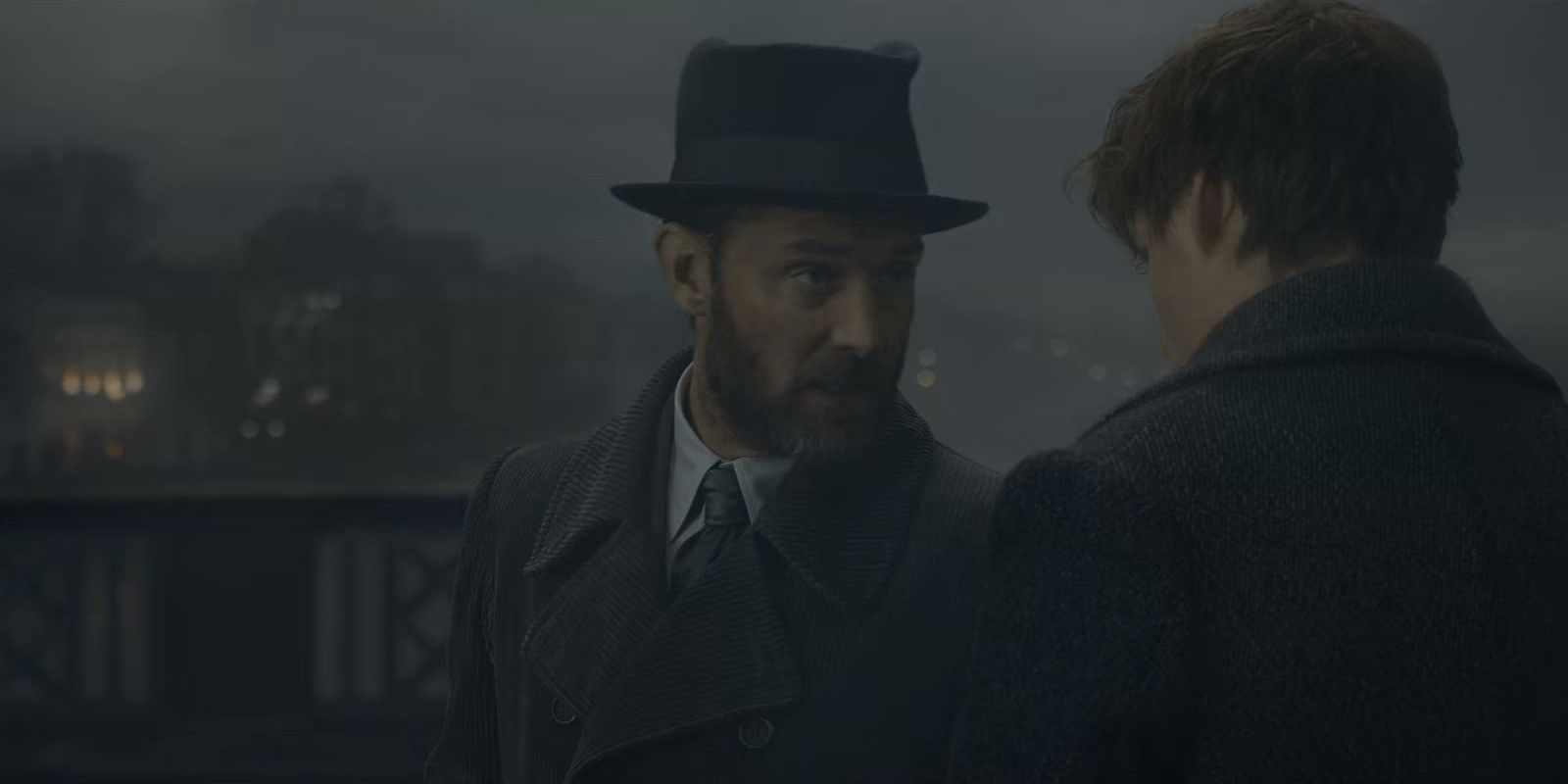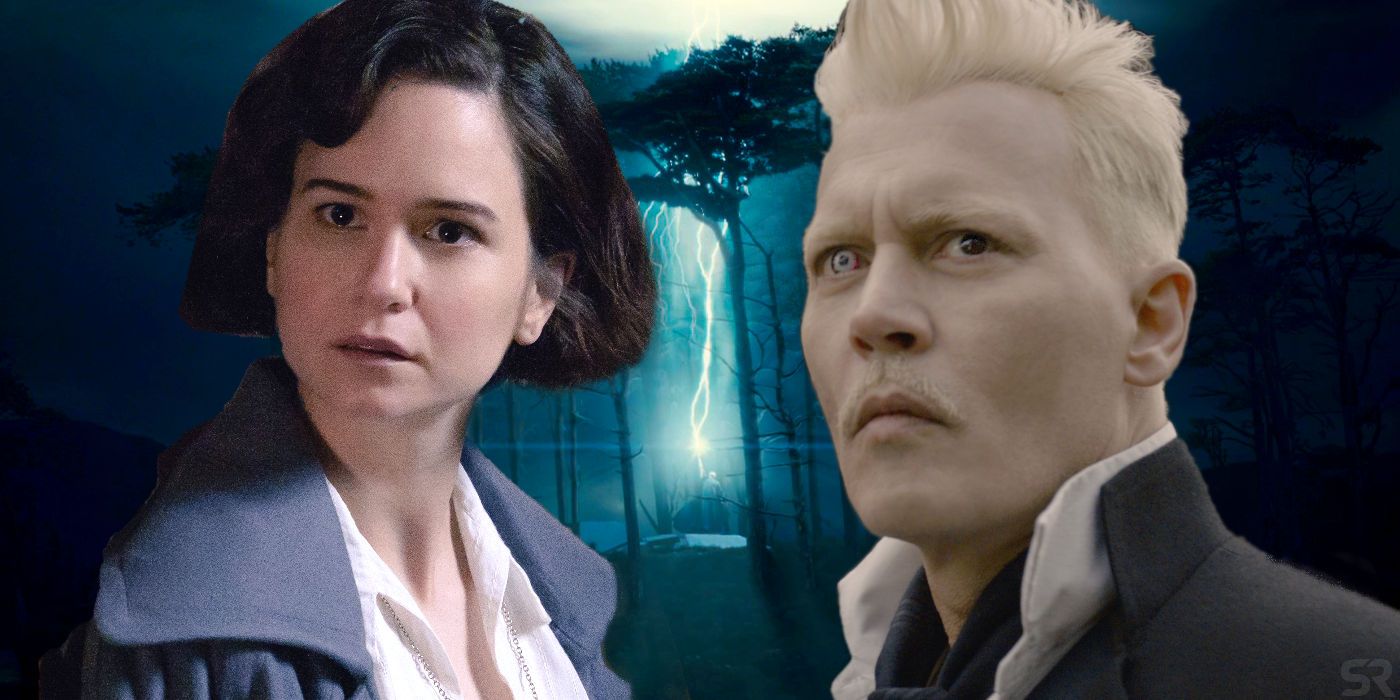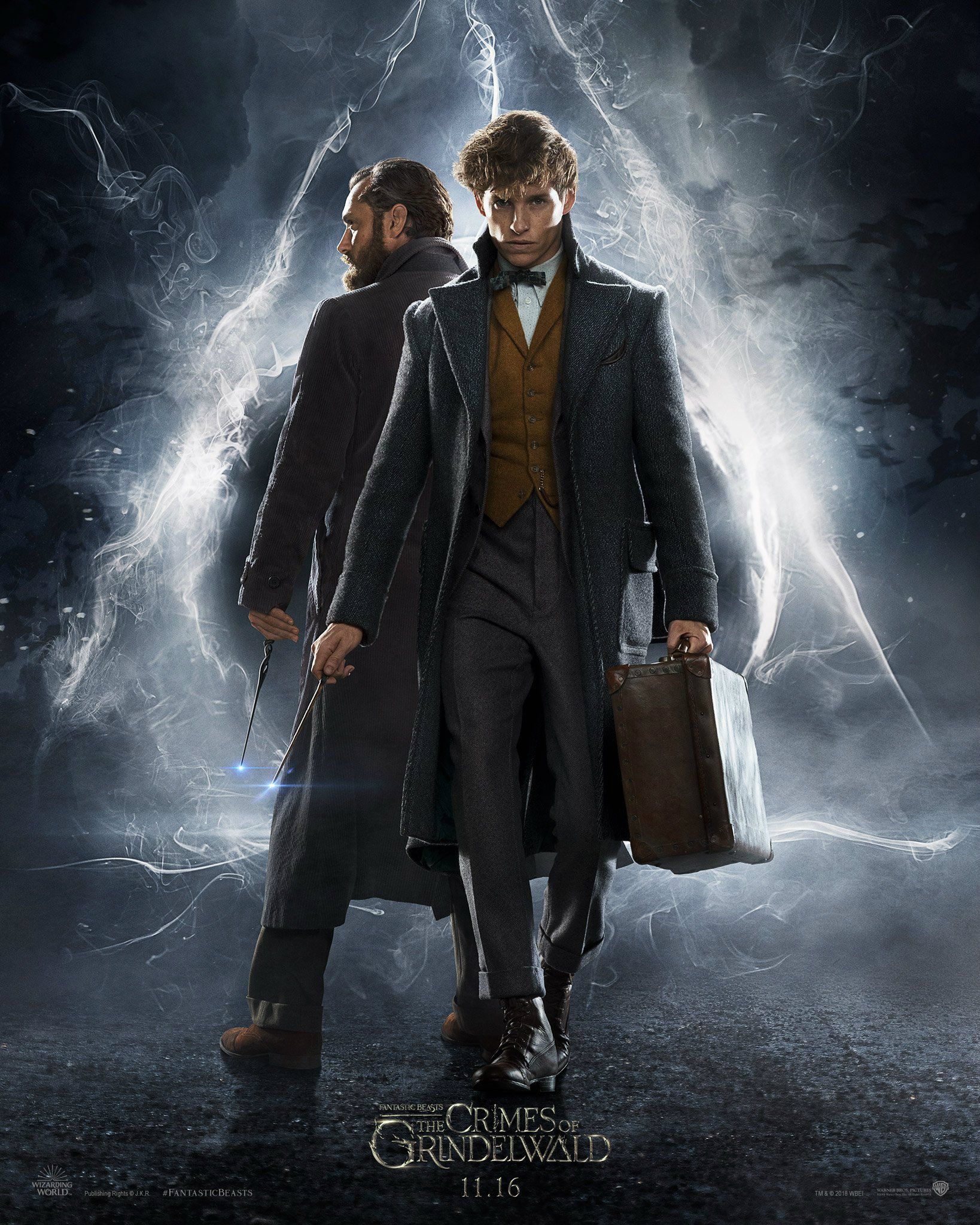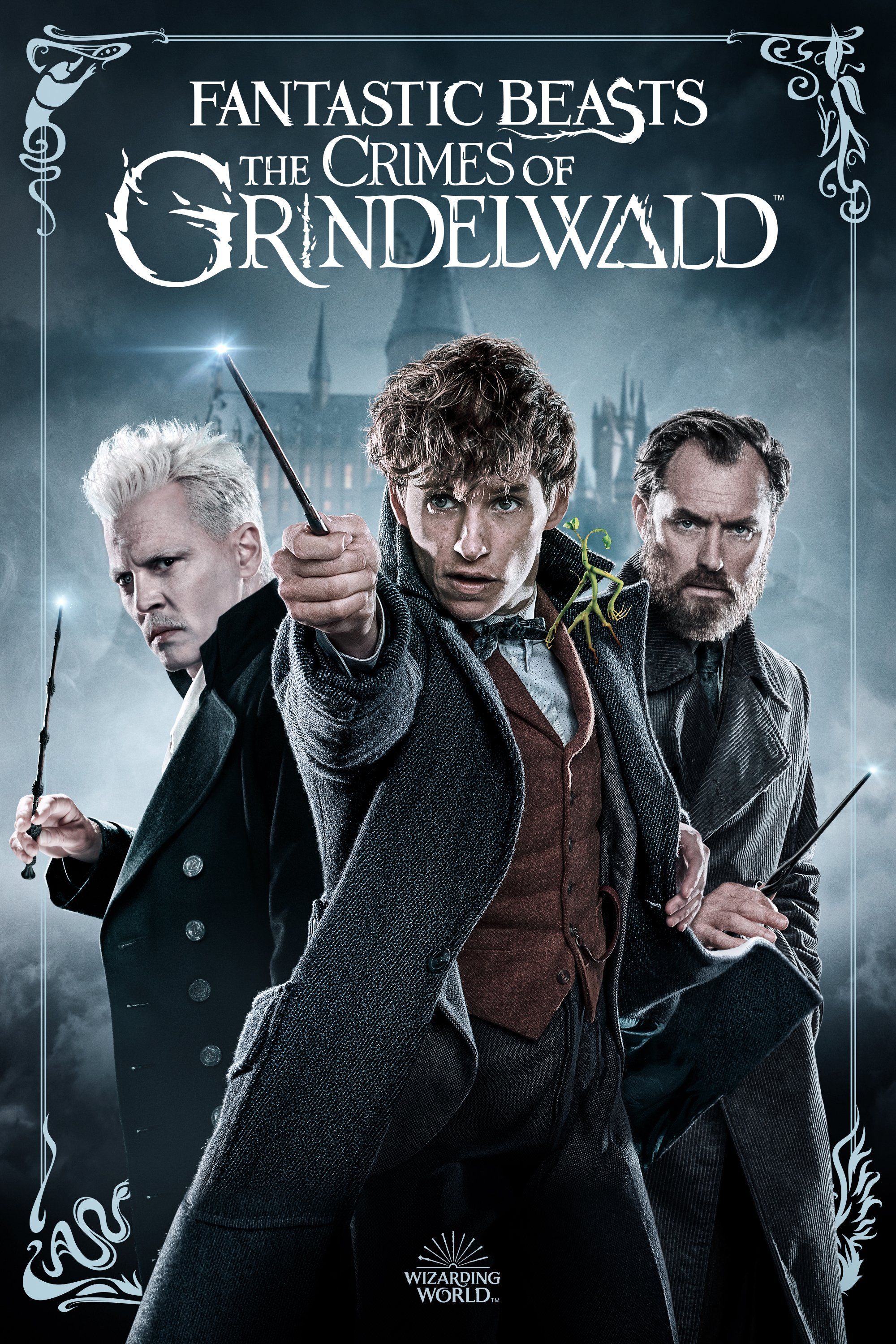WARNING: Major spoilers for Fantastic Beasts: The Crimes of Grindelwald.
Fantastic Beasts: The Crimes of Grindelwald has made some massive changes to the Harry Potter canon - with retcons and plot holes aplenty. When J.K. Rowling first wrote the seven Harry Potter books, one of the biggest points of praise was her accessible yet dense continuity that was mapped out well beyond the stories of the boy wizard and retained an impeccable internal consistency: dark wizard Gellert Grindelwald, the main villain of the prequel series, was first mentioned in 1997 in a manner that matches the Johnny Depp presentation.
However, as time's worn on, that continuity's begun to strain. Pottermore has allowed Rowling to greatly expand on her world, even though it often feels made up on the fly. Then, stage-play Harry Potter and the Cursed Child, which Rowling provided the story for, emerged as time travel fan fiction. Sealing the deal, though, is Fantastic Beasts, a five-movie prequel series to both the books and movies that has already thrown up a multitude of canonical inconsistencies and outright retcons.
Related: Fantastic Beasts Is Stretching Harry Potter Continuity To Breaking Point
While the first movie was just teasing these aspects, Fantastic Beasts: The Crimes of Grindelwald goes into full retcon mode, casually rewriting key character details and dropping redefining bombshells. It's an onslaught that even diehard Potterheads will get confused by. As such, here's every change Fantastic Beasts 2 made to Harry Potter canon.
- This Page: How Fantastic Beasts 2 Retcons Dumbledore
- Page 2: Fantastic 2's Beasts Retcons Of Harry Potter Canon
- Page 3: Plot Holes Created Within The Fantastic Beasts Films
Dumbledore Had Another Brother
The big twist of Fantastic Beasts: The Crimes of Grindelwald is that Credence Barebone is not, as has been agonizingly teased for the past two hours a Lestrange. As Grindelwald reveals after handing him a wand, he's really Aurelius Dumbledore, a hitherto-unknown brother to Albus.
From the Harry Potter books, specifically The Deathly Hallows which saw details posthumously emerge about the Hogwarts headmaster, we knew Albus Dumbledore had two siblings: disgraced wizard Aberforth (who runs the Hog's Head Inn by the 1990s) and squib/obscurial Ariana (who died during a battle between Albus and Grindelwald before the events of Fantastic Beasts). There's been no mention of a fourth Dumbledore anywhere in the canon before the Credence reveal.
This is a pretty major retcon given how important Ariana and Aberforth have become to the mythology, and one that the canon may be further stretched to accommodate. Albus' muggle mother died in 1899, while his father went to Azkaban in 1890 and was never released. As Credence was born around 1910, there's a major gap in his birth. It's possible that the timeline has been shifted due to the Harry Potter movies, which are set a decade after the books are supposed to, or that he was conceived in the prison. Of course, that only leaves more questions.
Related: Fantastic Beasts & Harry Potter's Different Grindelwalds Risk A Timeline Problem
Dumbledore & Grindelwald's Blood Oath
Dumbledore and Grindelwald's past is mostly skipped over in Fantastic Beasts 2. We get a hint at the death of Ariana and an even lighter wink towards their implied sexual relationship, but the films are still a way off approaching an explanation of their past that book readers know. In fact, the only concrete reveal in the film is something totally new in the canon.
Through Dumbledore's longing look in the Mirror of Erised, we see that Albus and Gellert entered into a blood pact, a magical bond that stops the pair from - presumably - killing the other. This is why Dumbledore sends Newt after Grindelwald, and would also explain Ariana's death; if the pair can't kill each other, it would be much easier for a stray spell to hit her. But, most importantly, it presents an alternate reasoning for why Dumbledore didn't take Grindelwald down for another two decades: he was working to remove the enchantment, a physical embodiment of his youthful attraction.
Dumbledore Taught Defence Against the Dark Arts
One thing that has been known for a long time about Albus Dumbledore is that he was Hogwarts' Transfiguration Professor before becoming Headmaster. In Fantastic Beasts 2, however, he's shown to be in charge of Defence Against the Dark Arts, teaching students how to defend themselves in battle for generations: from Newt's school years through to 1927, when the Ministry seems to ban him.
It must be assumed that, given this was never mentioned before, Dumbledore was moved over to Transfiguration following this ban, a role he served in until becoming headmaster in 1955. While this doesn't necessarily contradict the past, the fact such a major aspect of a key character's past has escaped mention so far makes clear it was never the plan.
Related: Fantastic Beasts' Grindelwald Has Been Part Of The Harry Potter Movies Since 2001
Phoenixes Are Important To The Dumbledore Family
Dumbledore had a phoenix in the Harry Potter books ostensibly because that fit such a grand headmaster of a school for witchcraft and wizardry. Since then, the phoenix has been used as the namesake for secret organization the Order of the Phoenix and, now, worked into Albus' family lineage. He reveals to Newt that one is destined to come to a Dumbledore in need, and at the end the raven that Credence was healing reveals itself as a firey bird, Fawkes.
This has to be one of Fantastic Beasts' lightest retcons; really, it's more an expansion of an idea that was lingering since Harry Potter and the Chamber of Secrets. Nevertheless, it sees dots being drawn between coincidence, something that's true of most prequels often to their detriment.
Page 2: Fantastic Beasts 2's Retcons Of Harry Potter Canon
The Order of the Phoenix Already Existed In 1927 (Sort Of)
Advancing from the Dumbledore's ancestral link to the phoenix is the history of the Order of the Phoenix. A secret group who opposed Voldemort founded by Dumbledore in 1970, its original ranks included the Potters, Sirius Black, Peter Pettigrew, and Remus Lupin, with the group reforming after the dark lord's return along with a new generation of wizards. What defines the group is, of course, their opponent.
In Fantastic Beasts 2, however, it's hinted that some version of the Order of the Phoenix existed when Tom Marvolo Riddle was just a baby. When the Aurors visit Hogwarts, Dumbledore is said to have a network of spies, shown to include Nicolas Flamel and Eulalie Hicks, with many more implied. What links this group most to the Order of the Phoenix, though, is the associated emblem: Dumbledore's magical rolodex features a phoenix. It could just be him leaning into family iconography, but the implication is that, while the name came when the group officialized against Voldemort's rise, the Order had been around in some form for decades previously.
Professor McGonagall Was Teaching At Hogwarts Before Her Recorded "Birth"
When the casting of Fiona Glascott as a young Professor McGonagall in Fantastic Beasts: The Crimes of Grindelwald was revealed, there was an immediate problem: in Harry Potter canon, Minerva McGonagall was born in 1935. It makes no sense for her to be alive in the 1927-set Fantastic Beasts 2, let alone already teaching at Hogwarts. There's not even an argument this could be a relative because her mother, Isobel Ross, wasn't a teacher at Hogwarts (and didn't marry until after this date).
Related: Fantastic Beasts: Professor McGonagall Breaks Harry Potter Canon
It gets even messier thanks to Dumbledore moving into her job as Transfiguration Professor, not to mention Fantastic Beasts 2's flashback to Leta Lestrange's school years, where McGonagall is also present; this memory takes place around 1910, making Minerva at least 110 by the time of Harry Potter. More than anything in The Crimes of Grindelwald, this is a full-on plot hole that, at present, has no reason to exist beyond fan service.
Nagini Was A Maledictus
One of the biggest yet meaningless retcons in Fantastic Beasts: The Crimes of Grindelwald is the reveal that Nagini, Voldemort's pet snake and Horcrux, was a human before she was a snake. To be specific, she's a Maledictus, a human cursed to transform into an animal who gradually loses control.
In the movie itself, this retcon is rather odd. It was prominently focused in the late-stage of the marketing, yet was more a background reveal in The Crimes of Grindelwald itself. Further, the film ended with Nagini pleading with Credence, her friend, to not join a fascist wizard dictator. How she goes from her current position alongside Newt and the Ministry of Magic to servant to the most dangerous dark wizard of all time is unclear, but now we know what Rowling claims was the backstory she'd planned all along (but surely didn't).
The Effects Of Polyjuice Potion Can Be Removed Easily
One of the Harry Potter series' favorite plot devices is Polyjuice Potion. A disgusting liquid that physically transforms the drinker into another person for a period of time, it was used by heroes and villains alike in The Chamber of Secrets, The Goblet of Fire and The Deathly Hallows (twice). It's an easy way for characters to disguise themselves, while the time constraints make for some tense, against-the-clock set-pieces. Although, apparently, there's a whole other concern with the concoction.
Related: Fantastic Beasts: The Crimes of Grindelwald's Ending & Twists Explained
In Fantastic Beasts: The Crimes of Grindelwald, Newt Scamander uses Polyjuice to sneak into the French Ministry of Magic, disguising himself as Theseus. When he's spotted by his brother who just so happens to be there at the same time, though, he removes the illusion by simply shaking his head, forcing himself to return to normal. It's one of many simplifications of prescriptive magic, obviously done to get Eddie Redmayne back playing Newt as quickly as possible, although poses some serious questions about previous uses of the potion - particularly why Hermione turning into a cat was such a serious issue.
Page 3: Plot Holes Created Within The Fantastic Beasts Films
Jacob's Memory Loss Was Only On Negative Memories
When it was confirmed that Dan Fogler would return for Fantastic Beasts: The Crimes of Grindelwald, there was one question that needed answering: how would Jacob get his memories back? At the end of Fantastic Beasts and Where to Find Them, Jacob - along with the rest of New York - had his memory of the film's events wiped, with just echoes remaining in his dreams to inspire the creations in his new bakery. The ending of the film had him reunited with Queenie, but he would still be a way off remembering her.
In the end, it was super easy, barely an inconvenience; apparently the obliviate spell only removes bad memories, meaning Jacob held onto the majority of his positive recollections of the multiple near-death experiences (while Queenie filled in the rest). Unfortunately, that's not how obliviate is established to work - from Gilderoy Lockheart to everybody else in New York, the notion of positivity has never come up and can't be made to work. It's evident that J.K. Rowling wanted Jacob back as easy as possible, but the solution doesn't quite track.
Dumbledore Was Behind The Events of Fantastic Beasts 1
Although it's now clearly going to be telling the story of Dumbledore and Grindelwald's conflict, Albus was really only a background presence in Fantastic Beasts and Where to Find Them: he was only mentioned once when Graves (really Grindelwald in disguise) was interrogating Newt. However, with Jude Law now cast as the younger Albus Dumbledore and his true motives revealed, The Crimes of Grindelwald wastes no time at all in saying that he was behind Newt's visit to New York City... from a certain point of view.
Related: Why Fans Are Mad At Fantastic Beasts: The Crimes of Grindelwald
Newt says to Albus that it was the Hogwarts professor who gave him the Frank the Thunderbird, which he predictably attempted to take home to Arizona. This was all a sly manipulation on Dumbledore's part to get Newt to America so he could either provide intel on Credence - already recognized as an immense power - or lure an in-hiding Grindelwald back into the light.
While this is very much in character for Dumbledore as presented in the Harry Potter books - he hid a lot of information from Harry right up to his necessary death - it's still a retcon to the events as presented in Fantastic Beasts (although is admittedly possible that Rowling had this planned all along).
Tina Didn't Gain Control Of The Elder Wand
At the end of Fantastic Beasts and Where to Find Them, Grindelwald is defeated by Newt and then disarmed by Tina, who uses Accio to take the dark wizard's wand from him. Under the rules of wands as laid down in Harry Potter and the Deathly Hallows, this would transfer ownership of every wand under Grindelwald's power to Goldstein - including the Elder Wand, which Gellert stole as a younger man.
It had been theorized this would be a key plot point in Fantastic Beasts going forward, but the opening of The Crimes of Grindelwald's suggest it may just have been oversight; from the opening sequence, Grindelwald is shown in complete mastery of the Elder Wand. This is one of the biggest plot holes in the series, where a minor moment betrays meticulous lore and leads to an unavoidable contradiction. Of course, it's still possible this will be looked at in Fantastic Beasts 3 or beyond.

